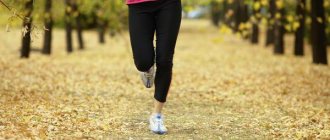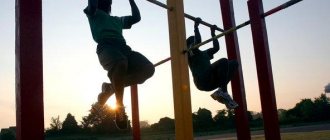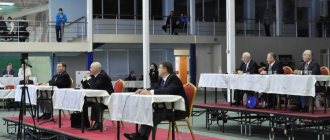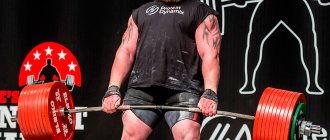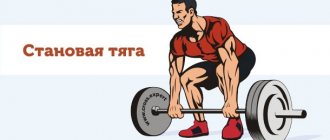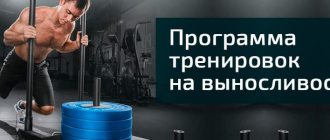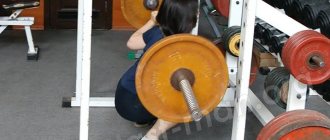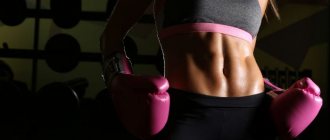Plyometrics is the so-called “jumping” training. It is called that because the vast majority of exercises in the plyometric training system are based on jumps and lunges. There are both classic exercises in this technique and more highly specialized ones. The term "plio" is translated from Greek as "growth" or "increase".
Plyometrics is recommended for all athletes, but this type of training shows its effectiveness especially well for those who need qualities such as endurance, strength and the development of speed abilities in their sport. For runners, plyometric training is desirable not only at the initial stage, but throughout their athletic career.
Benefits and features of plyometrics for runners
For sprinters and runners, this technique is indispensable: it helps to build maximum muscle strength, which is formed through sharp and impulsive contractions of muscle fibers. It is during such training that the body receives the greatest amount of oxygen and nutrients.
It is worth noting that in Russia plyometrics is just gaining momentum and is not used everywhere, while in the West, exercises of this type are included in the complex of mandatory exercises for runners, especially at medium and long distances.
The main advantages of plyometrics:
- a combination of strength and cardio exercise, which helps to simultaneously burn fat and tone the muscles of the whole body;
- Plyo training has the greatest effect on the athlete’s legs, which is especially important for runners;
- There are not only complex, but also simple exercises that are easy to perform even for beginners in sports;
- ease of implementation (no additional equipment or exercise equipment is needed) - exercises can be performed even at home if desired;
- plyometric exercises help speed up metabolism and bring the entire body into “working condition”;
- universality according to gender principle - suitable for both men and women;
- rapid increase in endurance and performance.
By the way, plyometric exercises are a win-win method for burning fat and purely aesthetically shaping the relief of the human body. So, if we consider plyometrics as a sovereign and independent exercise technique, then it stands out against the background of the same fitness for its versatility.
The role of athletics in the lives of modern people
The simplicity and accessibility of athletics have made it one of the most popular sports. Elements from it are used by professional athletes during training before a tournament. Some exercises are adapted for very young children who attend kindergarten and primary school. Playing sports during this period helps to develop strong strong-willed traits in the child’s character.
Athletics does not require financial expenses to purchase expensive equipment. In exactly the same way, there is no need for excellent physical training (although it is never superfluous). This sport strengthens all body systems, increasing immunity. He was appreciated by both high-ranking champions and military personnel. Athletics exercises are an important part of rehabilitation after injuries and paralysis.
Burpee
One of the most difficult and energy-consuming, but at the same time effective exercises in the plyometrics technique. The execution algorithm is as follows: stand in a plank position, then with a sharp jerk pull your legs under your body without removing your hands from the floor, then straighten your whole body and jump up, pushing off the ground with the strength of your whole body. Then lower yourself back to the starting position (plank).
These are just 5 of the most effective plyometric exercises that you can do even at home. Today, there are several dozen exercises in the system of plyometric techniques, among which any athlete can choose something suitable.
Pros of the SBU
Strengthening your legs and improving your running technique are not the only advantages of special exercises. In general, SBU has a positive effect on:
- upper body;
- compact running;
- relaxation when running;
- coordination and rhythm.
The SBU has improved not only the technique of the legs, but also the arms. It is easier to keep your hands under control while operating the SBU than when running. Correct posture is also achieved by ensuring that the athlete does not bend over during training. Looking only forward, the head is not thrown back or tilted. SBU strengthens the back muscles.
If you periodically follow the recommendations of “experts,” you will notice that all parts of the body will work and be in the correct position while running.
The running of many athletes can be called sluggish and shaky. Some sway from side to side, and some throw their arms and legs violently. SBU helps make running slower, and therefore more beautiful.
When performing SBU, the arms and shoulders should be in the correct position, but not extended. Otherwise, these moments will be transferred to the mileage.
And finally, the most important thing is coordination. Many beginners suffer from its absence. Without this, the image will not work properly to place your foot, work your arms, and the overall image and running economy will not work. The likelihood of injury increases.
Special running exercises have a positive effect not only on coordination, but also on rhythm, and allow you to produce the correct rhythm.
General recommendations for performing exercises:
- do not eat food an hour before training;
- do not overwork - increase the load gradually;
- at the beginning of training, refuse weights and additional equipment;
- the average time to complete one exercise is 40-60 seconds;
- follow the technique and do not rush, otherwise you will not see the result;
- The total duration of plyometric training should not exceed 1 hour.
Once the body and body get used to plyometric training, the exercises can be combined with other types of sports loads, for example, strength training.
Levels of organization
The main governing body responsible for the development of athletics is the International Association of Athletics Federations. Its representatives organize sporting events and also establish the rules for their conduct. They make up the world ranking of track and field athletes. The association holds world championships and athletics competitions as part of the Olympic Games.
In addition to the International Association, there are regional organizations. For example, the European Athletics Association. She is responsible for holding open and closed European Championships. There is a similar body in Russia - the All-Russian Athletics Federation.
When is the best time to do plyo exercises for runners?
Since plyometrics are mainly aimed at increasing the overall level of endurance and speed of a sprinter, it is best to perform the training in the preparatory phase. A short plyometric workout is perfect as a basic warm-up before a race.
Plyo training will also give a good effect to those athletes who have had a long break. Exercises of this technique, performed correctly, help protect the body from unnecessary and unwanted overload. For active runners, it is recommended to perform plyometric exercises in an underarm block.
It’s not for nothing that plyometrics is gradually gaining trust and respect in the sports community. A set of plyo exercises contributes to the comprehensive development of strength, endurance, productivity and speed ability of athletes. Regularly performing this cycle of exercises will help achieve even greater success in races over any distance, even for beginner athletes.
Story
The ancient Greeks and Romans were the first to appreciate the importance of sports training. They organized competitions, as can be seen from archaeological finds. The official history of athletics begins in 776 BC. e., when the first Olympic Games took place.
After the collapse of the Roman Empire, a ban was imposed on ancient competitions. Only centuries later, some countries began to hold competitions in running, throwing, shot put, and jumping. In 1873, college students in Rugby, England, organized a 2-kilometer race. This event received wide publicity. As a result, similar competitions began to take place in educational institutions throughout the country.
Over time, the competition program has diversified significantly. The following disciplines have been added:
- sprinting;
- running with obstacles;
- throwing weights;
- long jump (running);
- High jump.
In 1864, the universities of Oxford and Cambridge organized a joint competition. Later it became an annual event and gave rise to bilateral matches. The London Athletic Club, founded in 1865, also played a significant role in the popularization of athletics. Its representatives held championships. Sporting events continued to gain popularity and an amateur athletics association was formed in 1880. It became the highest body for athletics in the British Empire and its colonies.
The development of track and field disciplines in the USA began somewhat later. In 1868, an athletic club was established in New York. And in 1875, a student sports union appeared. Thanks to these organizations, American track and field athletes were in the first positions in the world until the middle of the twentieth century.
By the end of the 19th century, many countries had amateur athletics associations. Having received the rights of the highest bodies in their field, they united the individual clubs. The event that finally sparked public interest in sports took place in 1896, when the Olympic Games were revived. Athletics was given a special place in these competitions to pay tribute to the ancient Greeks.
Development of athletics in Russia
The history of the emergence of athletics in Russia is connected with the village of Tyarlevo, located near St. Petersburg. In 1888, a sports club was created there and the country's first running competition was held. In 1908, the first track and field athletics championship was held in Russia. 50 athletes took part in it.
Already at the beginning of the twentieth century, large cities had their own sports leagues. In 1911, about 20 similar organizations were united into the All-Russian Union of Athletics Amateurs. The following year, 47 Russian athletes competed at the Olympic Games in Sweden. Due to insufficient preparation and problems with organization, they did not take prizes.
The situation in the sports field improved after the October Revolution of 1917. And this happened thanks to universal military training. Within its framework, a number of large-scale competitions were held, in which the main place was given to athletics. In 1922, the RSFSR Athletics Championships were held in Moscow. And in 1923, the first international competitions were organized with the participation of Soviet athletes. Their rivals were Finnish athletes.
Classification
There are 5 main disciplines in total:
- Run.
- Walking.
- All-around.
- Throwing.
- Jumping.
There are different ways to classify athletics disciplines. This can be done using several parameters:
- age and gender of athletes;
- location of training and competitions;
- groups of athletics types.
Classification based on age and gender determines male and female sports. They are practiced by teenagers, young men and more mature people. There are 64 disciplines allocated for women. 50 of them are held outdoors, and the remaining 14 involve indoor activities. For men, these numbers are 56 and 15 disciplines, respectively.
Depending on the location, training can take place in a gym or in an open stadium, highway, country road, rough terrain, arena or park.
Depending on the structure, types of athletics are divided into cyclic, acyclic and mixed. Based on the principle of the athlete’s predominant physical qualities, disciplines are divided into:
- power;
- expressways;
- speed-strength;
- speed endurance;
- special endurance.
Athletics is divided into classical and non-classical. The first category includes areas included in the program of the Olympic Games. To the second - all the rest. Classical athletics includes 23 women's and 24 men's disciplines.
Frog
Develops many muscle groups: the foot for pushing off, the levator ligaments for lifting the hip, the front and back of the thigh for the power of pushing out of a squat. If you have never done this exercise, or you have had a long break, then you should not immediately start doing an exercise with a large number of jumps: this will most likely lead to severe acidification of the quadriceps muscle. To avoid this, start with just 1-2 sets of 3-5 jumps.
marathon and half marathon training plans and start training today!
9 simple exercises to strengthen your feet
All-around
All-around is a whole complex of different disciplines. It allows you to identify the most comprehensively developed athlete. All-around is included in the program of the Winter and Summer Olympic Games. Men compete in the decathlon and heptathlon, women in the heptathlon and pentathlon. For teenagers aged 11-13 years, a quadathlon is held.
For each sport, the athlete is awarded points (sometimes using empirical formulas). Two days are allotted for all disciplines. Before moving on to the next discipline, you need to rest for at least 30 minutes.
The decathlon includes: 100 m run, long jump, shot put, high jump, 400 m run, 110 m hurdles, discus throw, pole vault, javelin throw, 1500 m run.
For women, the heptathlon includes the following events: 100 m hurdles, high jump, shot put, 200 m run, long jump, javelin throw, 800 m run.
